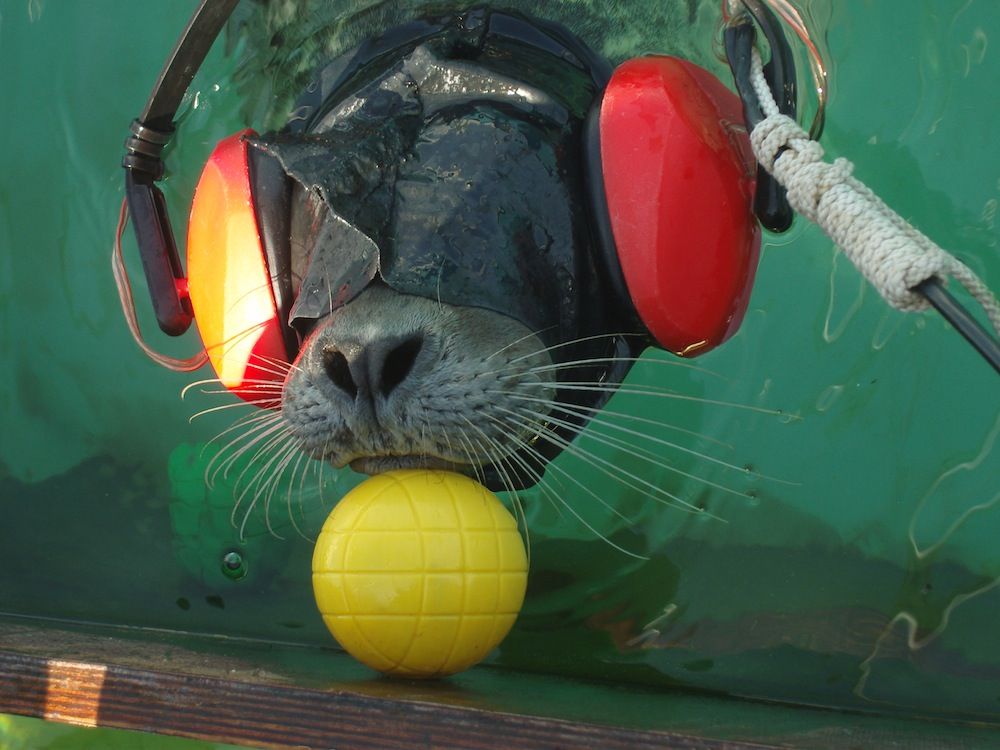Seals 'See' Echoes of Shapes With Their Whiskers

A seal's whiskers are an invaluable tool during the animal's hunting forays into murky waters. Now, a new study reveals that seal whiskers are sensitive enough to determine the shape of an object just by feeling the ripples it leaves in the water.
By testing a 12-year-old harbor seal named Henry, researchers found that just by feeling the wake of an object as it moves through the water, seals can judge size differences as small as 1.4 inches (3.6 centimeters). Henry could also tell the difference between a flat paddle and a triangular, undulated or cylindrical paddle. [Image Gallery: Seals of the World]
Those abilities are likely to come in handy for seals as they hunt in dark, silted water, said study researcher Wolf Hanke, of the University of Rostock in Germany. Hanke's earlier work with Henry found that seals can track the path of a passing fish up to 35 seconds after the fish is gone.
Given their amazingly sensitive whiskers and their need to navigate a dark underwater environment, it's no surprise that seals can also tell the shape of an object by its wake, Hanke told LiveScience.
"That would be an important thing for a seal that has to go on to decide if that fish or whatever it was is an interesting object to follow," Hanke said.
To test Henry the seal's shape discrimination abilities, the researchers first blindfolded and put noise-canceling headphones on the seal. Henry takes to the blindfold happily, Hanke said, as not being able to see is "quite usual to a seal."
Henry would then swim up to a closed plastic box in a pool. Hanke and his colleagues moved paddles of different shapes and sizes through the water in the box, allowing Henry to feel the wakes with his whiskers. After feeling a wake, the researchers would present Henry with a wake caused by a different shape. The seal was trained to touch a small plastic sphere by the box if he could tell that the new wake was different than the old wake.
Sign up for the Live Science daily newsletter now
Get the world’s most fascinating discoveries delivered straight to your inbox.
When the paddles were moved at the same speed, Henry could tell catch size differences as small as 1.4 inches (3.6 cm). Even when the paddles were moved at different speeds, Henry could still use the information in the wake to discriminate between paddles with as little as 1.7 inches (4.4 cm) difference in size.
The seal couldn't tell every shape of paddle from every other shape of paddle, but he could discriminate the flat paddle wakes from all of the other shapes 80 percent or more of the time. He could also tell the undulated paddle from the cylindrical paddle more than 60 percent of the time.
"It's interesting because this sensory system has been shown to find things, but it has never been shown to analyze things," Hanke said. "This opens the doors to a series of studies of object discrimination."
You can follow LiveScience senior writer Stephanie Pappas on Twitter @sipappas. Follow LiveScience for the latest in science news and discoveries on Twitter @livescience and on Facebook.

Stephanie Pappas is a contributing writer for Live Science, covering topics ranging from geoscience to archaeology to the human brain and behavior. She was previously a senior writer for Live Science but is now a freelancer based in Denver, Colorado, and regularly contributes to Scientific American and The Monitor, the monthly magazine of the American Psychological Association. Stephanie received a bachelor's degree in psychology from the University of South Carolina and a graduate certificate in science communication from the University of California, Santa Cruz.











